QinetiQ has been awarded a £30m contract to deliver unmanned aircraft systems to Canada.
The firm say that the deal is designed to drive enhanced situational awareness for the Canadian Armed Forces. The contract will be delivered from QinetiQ’s unmanned vehicle manufacturing and operational facilities in oddly named Medicine Hat, Alberta.
The vertical take-off UAS will provide Intelligence, Surveillance, Target Acquisition and Reconnaissance (ISTAR) services to the Royal Canadian Navy and Canadian Special Operations Forces Command, for both domestic and international operations.
The system, based on the UMS SKELDAR V-200 UAS, will be equipped with a number of sensors including an Active Electronically Scanned Array (AESA) radar and Electro-optic infrared (EO/IR) camera.
Robert Aube, Managing Director of QinetiQ in Canada said in a release:
“We are delighted with this contract win to deliver critical over-the-horizon situation awareness to the Royal Canadian Navy and Canadian Special Operations Forces Command. This generates tactical advantages for commanders while minimising the risk to manned helicopters and personnel. As a result of the contract, we will be pleased to see a large number of jobs created in the Southern Alberta region where UAS repair and overhaul services will be carried out.
We are dedicated to providing a world-class service for the Canadian Armed Forces and the information collected and used by a UAS system of this calibre will be critical for the men and women serving Canada, both domestically and abroad.”
Iain Farley, Managing Director International Business at QinetiQ said in the same release:
“International growth is a core part of QinetiQ’s strategy and to facilitate this, we continue to make significant investments in our subsidiary businesses and complementary acquisitions. This contract provides an important proof point that this strategy is delivering. The investment we have made in Canada has helped secure our largest Canadian contract to date and provides us with a solid foundation for delivering further QinetiQ products and services into the Canadian market and beyond.”
QinetiQ will work with four principal partners to deliver the ISTAR services: Canadian-UAV, Leonardo, UMS SKELDAR and Wescam:
“This is an important contract win for us alongside our partners including QinetiQ and confirms our stated strategic commitment to working with global navies following our announcement last year with the German Navy,” explains Axel Cavalli-Björkman, CEO of UMS SKELDAR, the UAV joint venture between Sweden’s Saab and UMS AERO GROUP of Switzerland.
“With multiple systems to be delivered in Q3 this year, the Royal Canadian Navy have secured a maritime UAV platform that not only includes our heavy fuel engine manufactured by German-based Hirth Engines, but also has an ability to carry multiple payloads.”

“L3 WESCAM is proud to have been chosen by QinetiQ, as it confirms our role as a trusted global supplier of advanced imaging technologies to the UAS market,” said Cameron McKenzie, Vice President, Global Sales & Business Development of L3 WESCAM.
“In fact, this order marks many strategic firsts for WESCAM in the Canadian marketplace, including a first for our MX™ Series turrets to be used by the Royal Canadian Navy, a first order for our MX-8 and MX-10D in Canada and our first contract with QinetiQ in Canada.”




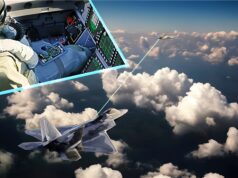
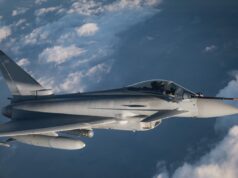
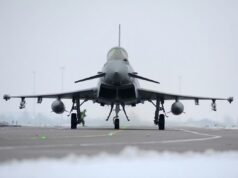
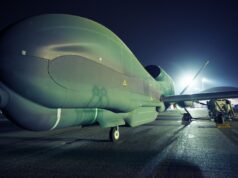

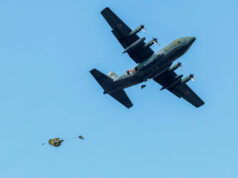


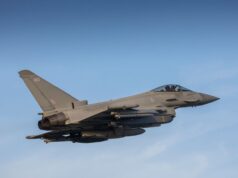

The RN pioneered helicopters flying from small ships. It’s a shame the RN isn’t doing more with rotor UAV.
Yeah I agree. Shame. It’s also a shame the RN has lost half of its helicopters in the past 10 years! Atleast we will have RN fast jets again but we used to have lots of squadrons of RN fast jets! And plenty of choppers. We will be lucky if the RN could field 48 jets in future.
Yes, we used to have alot more helicopters, but most of them were crap compared to what we have today. And if we can deploy 48 F35’s in the future,that is a very serious capability, to put 48 5th gen stealth fighters anywhere in the world is pretty dam good. We sent 32 Tornado GR4s to the gulf war in 2003. That is the largest deployment of a single type since the first gulf war in 1991.
I agree to an extent, however, the the conflicts and disaster relief efforts undertaken by the UK have highlighted that helicopters are a crucial asset. The conflicts speak for themselves – Northern Ireland, Sierra Leone, Iraq, Afghanistan, the Falklands. Not to mention disaster relief efforts in the Caribbean, Africa and Asia.
Whilst what we have is better than what we had, their numbers have fallen far too sharply. It’s again a case of fantastic kit… just not enough of it. A case in point being existing Merlin airframes being converted to ‘baggers’ rather than ordering new airframes. Just as Cam and I were discussing the other day, we have seen the loss of helicopters deploying from our Antarctic Patrol Ship (agreeably for more than one reason – no hangar), the draw down of the Merlin fleet by 15 airframes, and the replacement of the Lynx with rather pitiful Wildcat numbers.
We need to see an uplift in this capability, especially if we have a desire to grow the fleet, replace attritional losses, and keep up with the UAV market. We don’t need to return to our previous numbers, but we do need to increase the rate of manned platforms and augment this capability with rotor UAVs which will be of real benefit to smaller vessels.
So sad to see GB going down the same round as Germany in electing leaders that put national defense so low on their priority list. They take away desperately needed defense money to fun immigration and social problems that have never worked.
The defence budget has been stable for the last 5 years in real terms and has met the NATO target of 2% of GDP for 8 years.
The defence budget in actual terms for Year Ending March 2019 it was £48.3 billion. In fact defence spending has been mostly going up since 2000 and it has gone up since 2017.
(ukpublicspending.co.uk)
Where is the evidence that social policies are taking away money from the defence budget?
Where is the low priority, when we have one of the biggest defence budgets in the world and very soon will have the largest carrier strike force in the world outside America? Look at it another way and we have the largest and best group of special and elite forces anywhere in the free world outside the USA.
What low priority? We can of course go back to The War of Spanish Succession where it was 20% of GDP…
What is the limit on size for these 4 rotor drones that we see and cause problems at airports. I mean can a decent sized one run off a ship and do meaningful operations?
The Canadians perfected flying helicopters from small ships, and developed the Beartrap system to do so. https://en.wikipedia.org/wiki/Beartrap_(hauldown_device)
This is exactly the area where I wish the UK could use UK armed forces requirements to drive some UK research and product development. Our strengths in engines, very cutting-edge automotive (F1 stuff), satellites for compact, low-weight and robust electronics, plus software particularly AI all play directly into this market plus imagine what such a vehicle could add to the surveillance reach of something like a River when in a low-intensity policing role. It’s great to see a UK company like Qinetiq building out its global sales but it’s a shame it didn’t have a UK platform available on which to deliver this particular contract.
I wonder how the UMS V-200 compares spec-wise to the Schiebel S-100. I note that the S-100 has actually demonstrated the ability to carry 2 x Martlet, even test fired one as part of the validation I believe, so something like S-100 could even allow a River to engage a small skiff or similar at way beyond 30mm range, even over-horizon if required (not autonomously of course, suitable sensors to keep man-in-the-loop would be required not to mention a laser designator and good optics package). S-100 is tantalisingly close to being able to carry a sophisticated wide-area sensor package (e.g. SAR or ViDAR) plus two Martlet and optical/laser-designator package for that. From looking at the UMS V-200 I suspect it has similar payload/endurance characteristics. Could a new design push things just a bit further to allow such a full wide-area surveillance plus limited engagement package (which would also imply greater endurance when carrying a lighter surveillance-only load)? I note for instance that both Scheibel S-100 and UMS V-200 have twin-blade rotors. Would a design with a folding 4-blade rotor improve the payload/endurance curve? The rotor would need to fold of course but these things stand little over 1 metre off the ground so it wouldn’t be like Merlin, an engineer should be able to deploy/re-fold with fairly simple tools while standing next to the unit if the design was good.
Anyway, I’m not a mechanical or aeronautic engineer but I do have a feeling that with the right incentives and demand from the MoD UK industry could step up deliver something really good in this space with massive benefits to the RN plus massive export potential. Still, at least Qinetiq is getting some very close hands-on experience with what would be a competing product.
The UK and RN in particular need to get as many of these (or similar product) as we can afford. I am talking hundreds of them not 10 or 20.
The difference these make in the field is astonishing and I am sure many police forces would also benefit from these as well.
I know money is tight, but this and other unmanned systems are game changers. A T31 with 2 of these is a good platform, as is a T45 with 2 of these and a merlin.
At some point these unmanned systems need to stop being on a wish list and become the new norm.